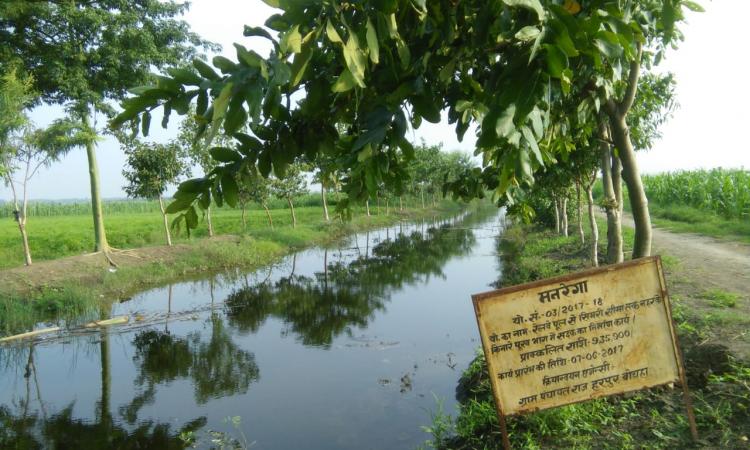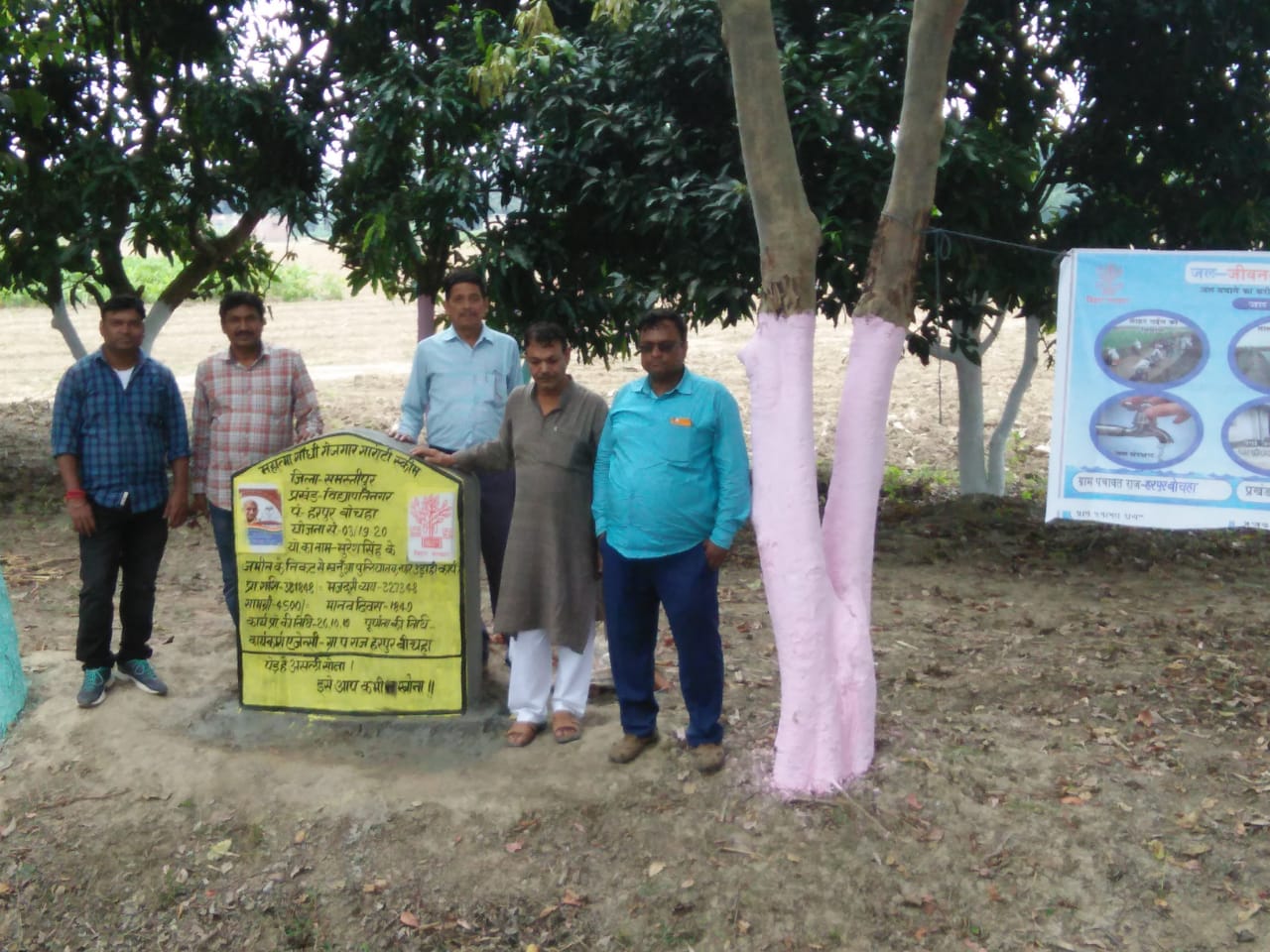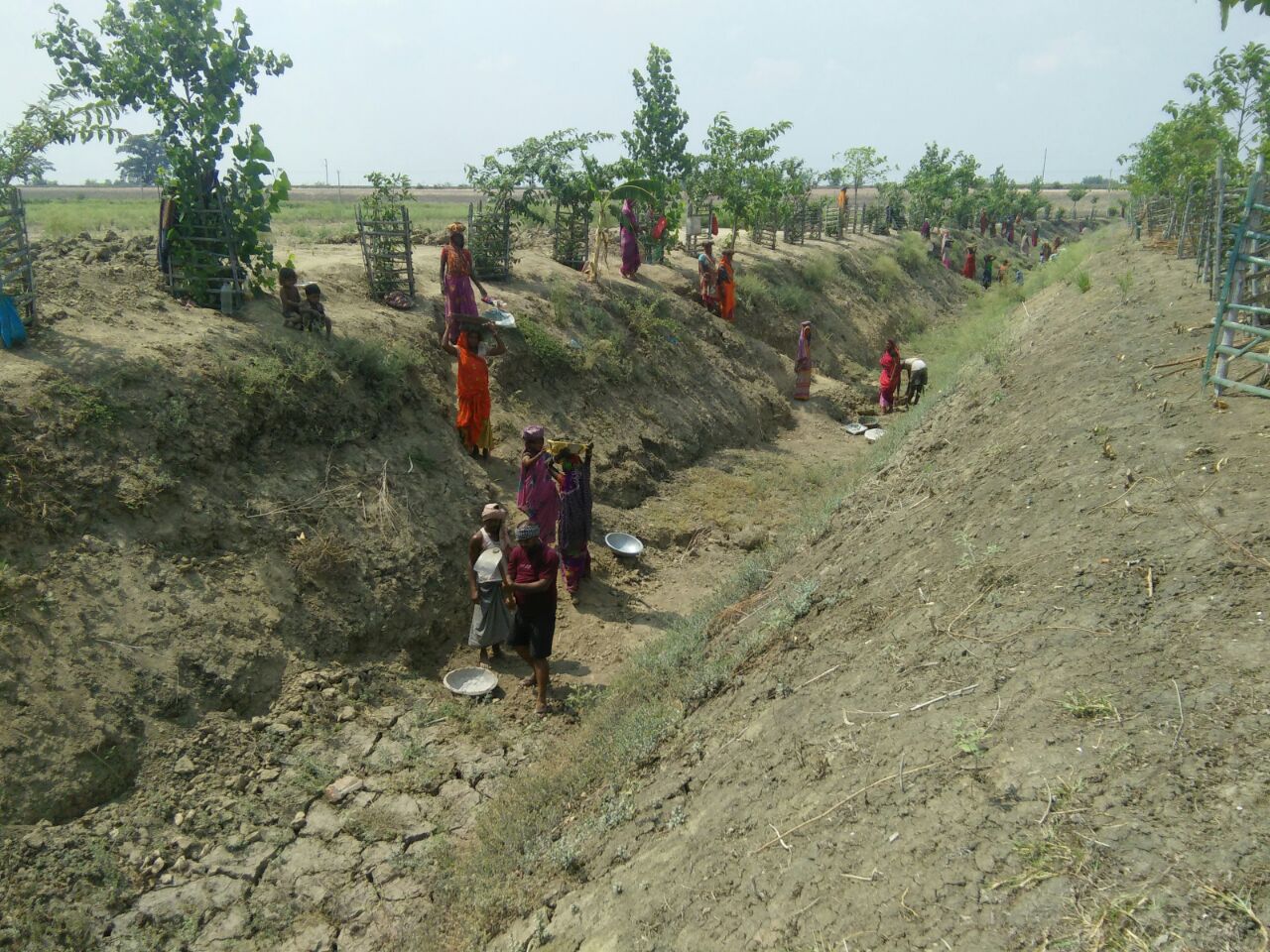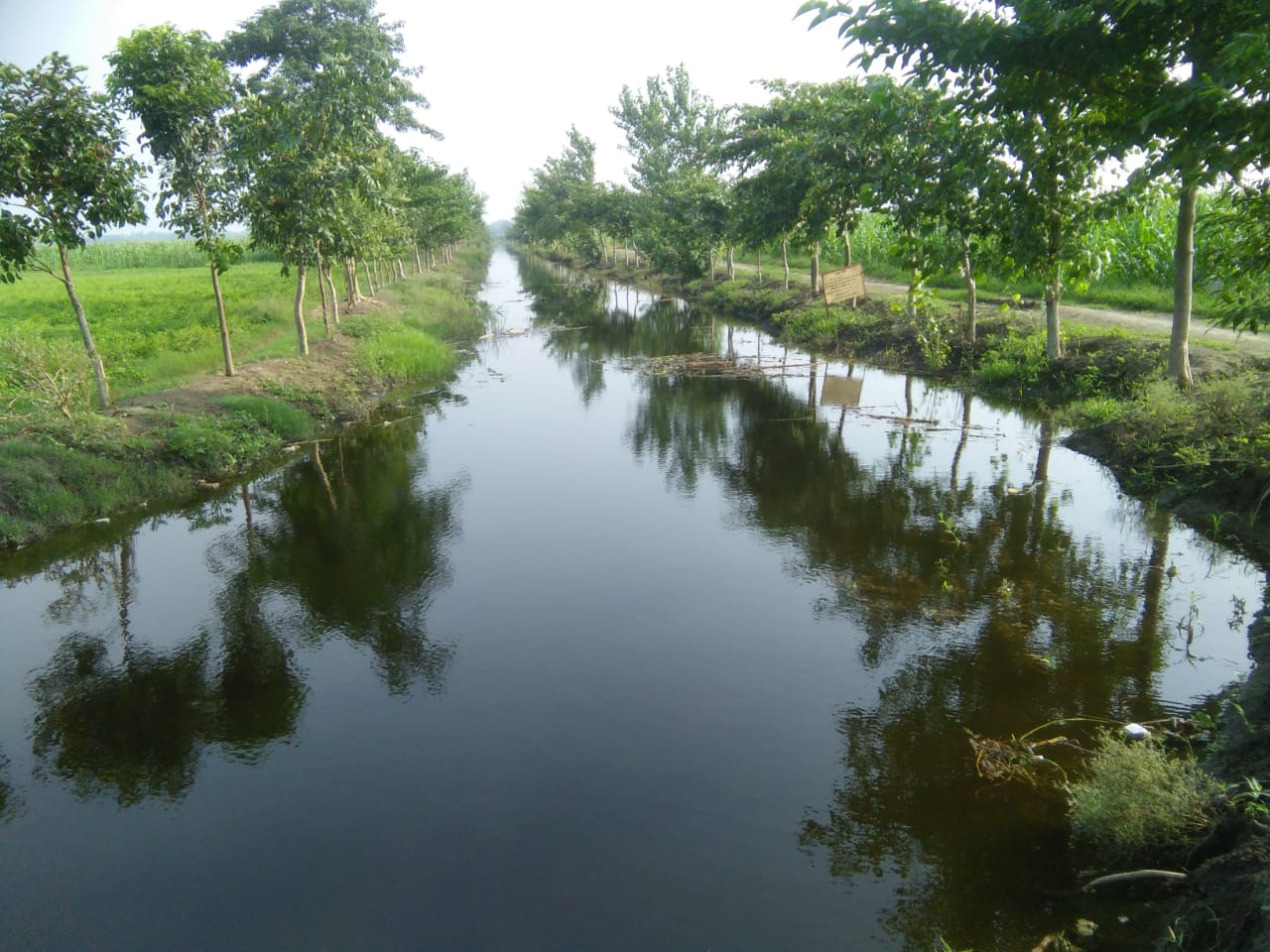
Harpur Bochha is a village in Vidyapatinagar block of Samastipur district of Bihar. The village, which has a population of about 11.5 thousand people and 2349 houses, remained inundated with rain and floodwater throughout the year followed by waterlogging. As a result, not a single crop would grow on a total of 6400 acres of land, which is a part of Harpur Bochha and six other panchayats
A permanent solution, however, has now been found to free the village from the curse of waterlogging. Although flood and waterlogging still prevail in the village, the inundation is not yearlong as before. Floodwater entering the village recedes in a week to 10 days and locals are no longer fearful. The 6400 acres of land, where cultivation was not possible earlier due to waterlogging, is now utilised to grow three crops in a year. How did this happen?
People's cooperation creates a way

Thanks to the united action of the local people and the wisdom of the village head, a solution to the problem of waterlogging has been created.
The issue of waterlogging has been plaguing the village for a very long time. This is obvious from the fact that even official documents have demarcated affected lands in the village as a wetland instead of farmland, which implies that its history of waterlogging is quite old. Local people inform that during monsoon, floodwaters entering the village inundated the area for almost the entire year and the 6400 acres land was rendered useless due to waterlogging
In 1977, when the former Prime Minister of India, Mrs Indira Gandhi visited the village, some of the people submitted a letter to her that demanded a solution to this issue of waterlogging. However, no government action was taken.
“As I remember, this problem of all the year-round water inundation had been affecting us since my school days. Although we took this issue to many leaders, nothing was done about it, informs the local head Prem Shankar Singh.
In 2001, Singh contested and won the election for the local head. However, at that time, there was no such plan to find a permanent solution to the waterlogging problem.
MNREGA comes to the rescue

In 2006, Singh was again elected as the village head which coincided with the launch of Mahatma Gandhi Rural Employment Scheme (MNREGA). The scheme, which included canal and pond excavation, among other rural works, served as a boon for this village.
“I was overjoyed to see that MNREGA also included canal excavation and it struck me that why not dig a long canal that will direct the floodwaters accumulating in the 6400 acres of land to the river”, he said.
However, the implementation seemed difficult. Two rivers flow near the village, one is the Noon river which is about 20 kilometres from the village and the other is the Baya river which is six kilometres away. During the flood season, it is the Noon river that causes floods in the village so there was no benefit connecting the canal to the river. Thus, the villagers decided to link the canal to the Baya river, that later joins the Ganga river and causes very little flooding in the village.
“We decided to dig a 6 km long canal and link to the Baya River. For this, we required land so a Gram Sabha meeting was called and the benefits of the canal were explained to the people”, Singh tells the India Water Portal.
"Initially, many people refused to give their land, so I decided that as far as possible the canal would cross through fields on both its sides and equal land would be taken from both the sides of the fields. Wherever this would not be possible, a canal will pass through the middle of a field. People, although reluctant in the beginning, agreed to the plan later,” says Prem Shankar Singh.
Locals lend their support
The construction work for the canal was started in the year 2007. In 2009, when the work was yet to be completed, floods struck the village. Nevertheless, the canal showed its benefits. Floodwater receded in a few days from the fields and the village and people were able to see the benefits of the canal. Following this, locals gave their full support for the canal construction works, which was completed in 2010. Under the MNREGA scheme, 30 feet wide, 20 feet deep and 6 km long canal was constructed in the village.
The canal not only solved the problem of waterlogging in the village but also provided water for irrigation during drought. The villagers inform that the rainwater which gets stored in the canal also fulfils their irrigation needs during drought.
Tree plantation taken up to prevent erosion

Due to heavy flow in the canal during the monsoons and the flood season, a new problem of erosion on both sides of the canal surfaced.
“Initially, we thought of concretising the sides, but the scheme was shelved due to lack of funds. Then it was decided that tree plantation would be taken up on both the sides to tackle the issue” remembers Prem Shankar Singh.
“The turbulent flow in the canal, in the beginning, was causing severe erosion. However, to solve this issue, we agreed to plant trees on both sides of the canal instead of paving it. In 2010 itself, about 1.25 lakh trees were planted on both the sides and this work was also carried out under MNREGA. This not only prevented erosion but also increased greenery in the area.”, informs Prem Shankar Singh.
Ponds created for water conservation

The canal was built for drainage, but there was a need for water conservation as well because, during drought, the scarcity of water severely affected the irrigation system. Therefore, digging of a pond in the village was decided.
Prem Shankar recalls, “To accomplish this work, we again took the help of MNREGA and carried out digging of 10 ponds for the conservation of water. The ponds have also been connected to the canal to allow drainage of excess water from the canal. They are now being utilised for fish farming and providing water for irrigation of farmlands."
However, few people in the village pointed out that sometimes when the water level is low, the canal is unable to drain out the water. Parmanand Singh, a local resident of the village who possesses seven bighas of agricultural land on the 6400 hectares land, says, "At present, four feet of water is logged in my field, but it is not getting drained by the canal."

In this regard, Prem Shankar Singh informs that the sluice gate of the canal has been closed as the water level in the Ganga river is high. This is the reason that the fields are getting waterlogged. However, whenever the water level in the Ganga river will decrease, the gate will be opened and all the water will be drained out.
You can read the article in Hindi here. Authored by Umesh Kumar Ray; Translation to English by Swati Bansal
/articles/mnrega-helps-village-bihar-become-flood-proof